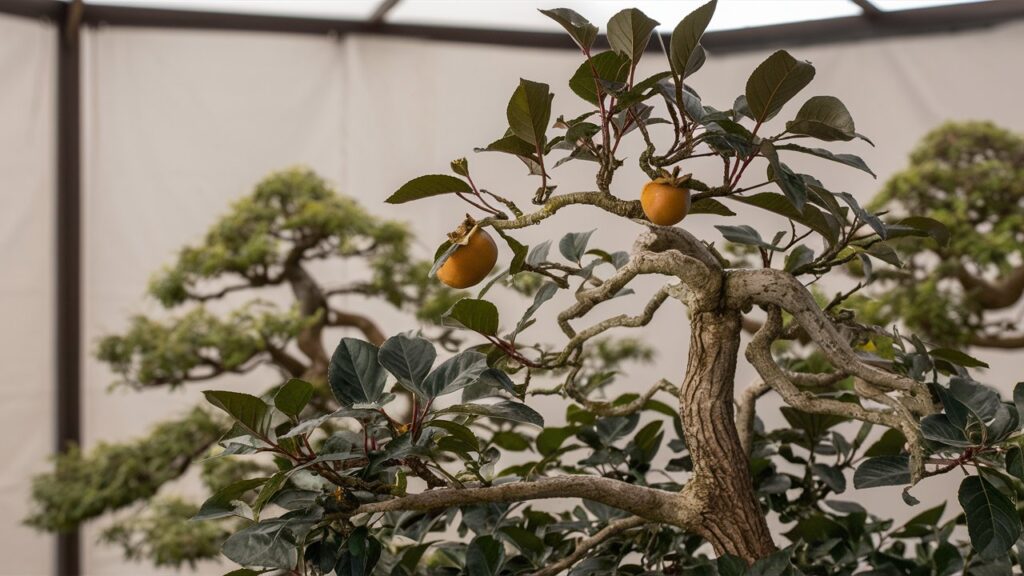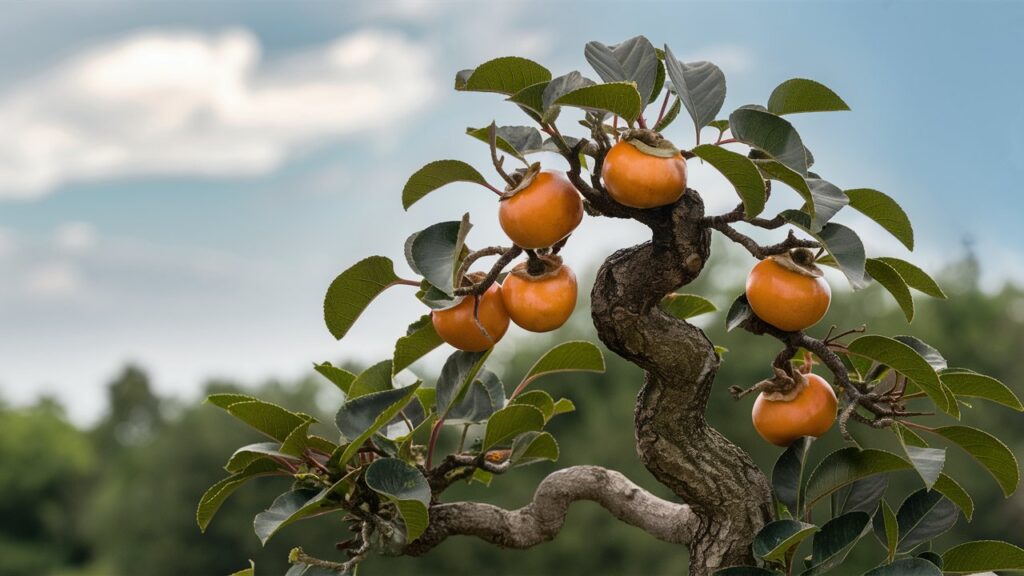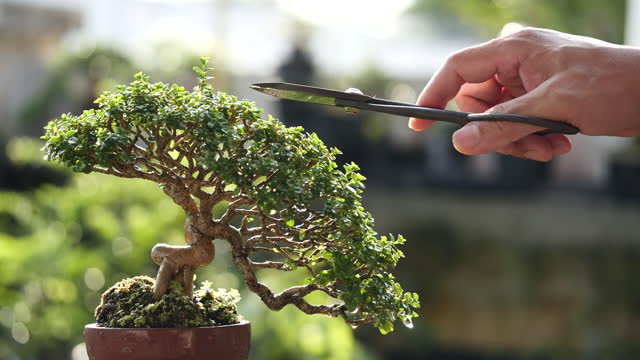The American persimmon (Diospyros virginiana), native to eastern and central United States, is well-suited for bonsai cultivation. Its slow growth rate, interesting bark texture, and vibrant fall foliage make it an excellent choice. The tree’s adaptability to various soil types and climates, along with its distinctive blocky bark and potential for parthenocarpic fruit production, enhance its appeal for bonsai enthusiasts.
Key Takeaways
ToggleUnderstanding American Persimmon
The American persimmon, native to the eastern and central United States, grows 15-80 feet tall. It adapts to various soils, preferring moist, well-drained sandy types. Its dark green elliptical leaves and distinctive bark with deep fissures resembling alligator skin are key features. The tree produces edible fruit that ripens in late fall, becoming sweet after the first frost. Its dense, strong wood is valued in specialty woodworking. These characteristics make the American persimmon valuable for cultivation, culinary use, traditional medicine, and woodcraft.
Must Read: Fruiting Bonsai Trees
Selecting the right American Persimmon for Bonsai

When selecting an American persimmon for bonsai:
1. Choose a tree with a strong trunk and well-defined branching structure.
2. Opt for younger trees, as they’re more adaptable to training and shaping.
Suitable varieties include:
1. Fuyu/Jiro: Non-astringent fruit, self-fruitful, ideal for home orchards.
2. Hachiya: Produces large, sweet fruit when fully ripe.
3. Chocolate persimmon: Offers sweet fruit with cocoa hints.
These varieties thrive in bonsai settings and produce edible fruit, enhancing your bonsai garden’s appeal and functionality.
Soil and Potting Requirements
American persimmon bonsai thrive in well-draining, slightly acidic soil. A mixture of 50% Akadama, 25% pumice, and 25% lava rock provides ideal drainage while retaining necessary moisture. Choose shallow containers with adequate drainage, sized proportionately to the tree. This combination of soil and pot helps control root growth and maintains the compact structure essential for bonsai. Regular monitoring of soil moisture and adjusted watering are crucial for maintaining optimal conditions. These practices ensure healthy growth and contribute to the development of a vibrant, well-formed persimmon bonsai.
Watering and Fertilization
American persimmon bonsai require consistent moisture without waterlogging. Water deeply when the top soil layer dries out, especially during summer. This mimics natural conditions and prevents root issues.
Fertilize with a balanced 10-10-10 slow-release fertilizer in early spring as growth begins. This supports the tree’s nutritional needs throughout the growing season. Avoid high-nitrogen fertilizers later in the year to prevent fruit drop.
These watering and fertilization practices promote healthy growth and fruit production, essential for successful American persimmon bonsai cultivation. Regular monitoring and adjustment of these practices ensure optimal conditions for your bonsai’s development.
Pruning and Shaping
Pruning is essential for maintaining the health and aesthetics of American persimmon bonsai. It encourages new growth, controls the tree’s shape, and promotes a balanced structure. Prune during late winter or early spring when the tree is dormant to minimize stress and aid recovery.
Use directional pruning to guide growth by trimming branches back to a bud facing the desired direction. Removing up to one-third of the foliage is acceptable to encourage denser growth and improve air circulation.
Consider the tree’s natural form, which features slender, contorted branches, when shaping. These techniques help create a bonsai that highlights the unique traits of the American persimmon tree.
Sunlight and Temperature Requirements
American persimmon bonsai need at least 5 to 6 hours of direct sunlight daily for optimal growth. While they thrive in full sun, some afternoon shade during the hottest months can prevent leaf scorch. The tree is hardy in USDA zones 4 through 9, tolerating cold winters but needing protection from extreme frost.
During the growing season, temperatures between 70°F and 85°F are ideal. Keep your bonsai outdoors from late spring to early fall to ensure it receives natural sunlight and rainfall. These practices will help maintain a healthy and vibrant bonsai.
Pest and Disease Management
American persimmons are generally resilient but can be affected by pests like the persimmon borer, fall webworm, and ambrosia beetle, which damage the bark and foliage. Persimmon phylloxera may deform leaves, and leaf spot diseases can cause yellowing and leaf drop.
Preventive measures are key. Regularly inspect the tree for pests and diseases, and maintain good cultural practices like proper watering and fertilization to strengthen the tree’s defenses. Insecticidal soap or neem oil can effectively control pests, and removing affected leaves and debris helps prevent disease spread. Proactive management ensures a healthy and thriving bonsai.
Harvesting Fruits

Harvesting fruit from your American persimmon bonsai requires patience. The fruit ripens in late fall, turning a golden orange or red. Wait until the fruit is fully ripe to avoid astringency. Gently twist the fruit to detach it, taking care not to damage the branches.
Once harvested, the sweet pulp can be used in desserts like persimmon pudding, bread, or jams. American persimmons are rich in vitamins A and C, fiber, and antioxidants, offering both flavor and health benefits. Incorporate these fruits into your meals for added taste and nutrition, and explore recipes that highlight this unique fruit.
Conclusion
Cultivating American persimmon bonsai requires dedication and adherence to proper care techniques, but the rewards are well worth the effort. By providing the right soil, water, and nutrients, while carefully pruning and shaping your tree, you can create a stunning bonsai that showcases the Unique characteristics of the American persimmon. With the right guidance and enthusiasm, anyone can embark on the rewarding journey of growing and enjoying this fascinating bonsai species.



